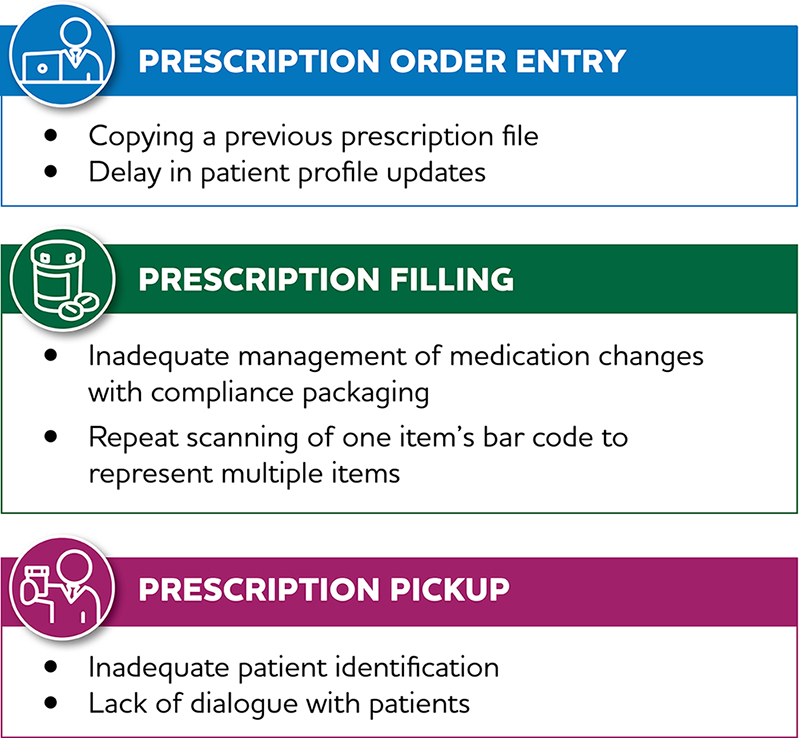Making continuous quality improvements in community pharmacy relies on the analysis of good data, and a recent Safety Bulletin from ISMP Canada shows how problematic processes can contribute to medication incidents in busy pharmacies.
Their analysis of medication incidents voluntarily reported between March 2017 and June 2019 identified six areas where the risk of errors was heightened by measures intended to expedite prescription processing, grouped within three stages: order entry, filling and pickup.
COMMON AREAS OF RISK

For example, the bulletin notes that when entering a new prescription into a patient’s electronic file, an existing prescription for the same medication is sometimes copied as a way to speed up processing. In the incident shared in the bulletin, the employee overlooked changing the strength of the medication, resulting in the patient receiving only half the prescribed dose. As a tip for pharmacy professionals, ISMP recommends creating a new entry for all new prescriptions and limiting the copy function to new prescriptions that are unchanged from the previous prescription in the patient’s profile.













